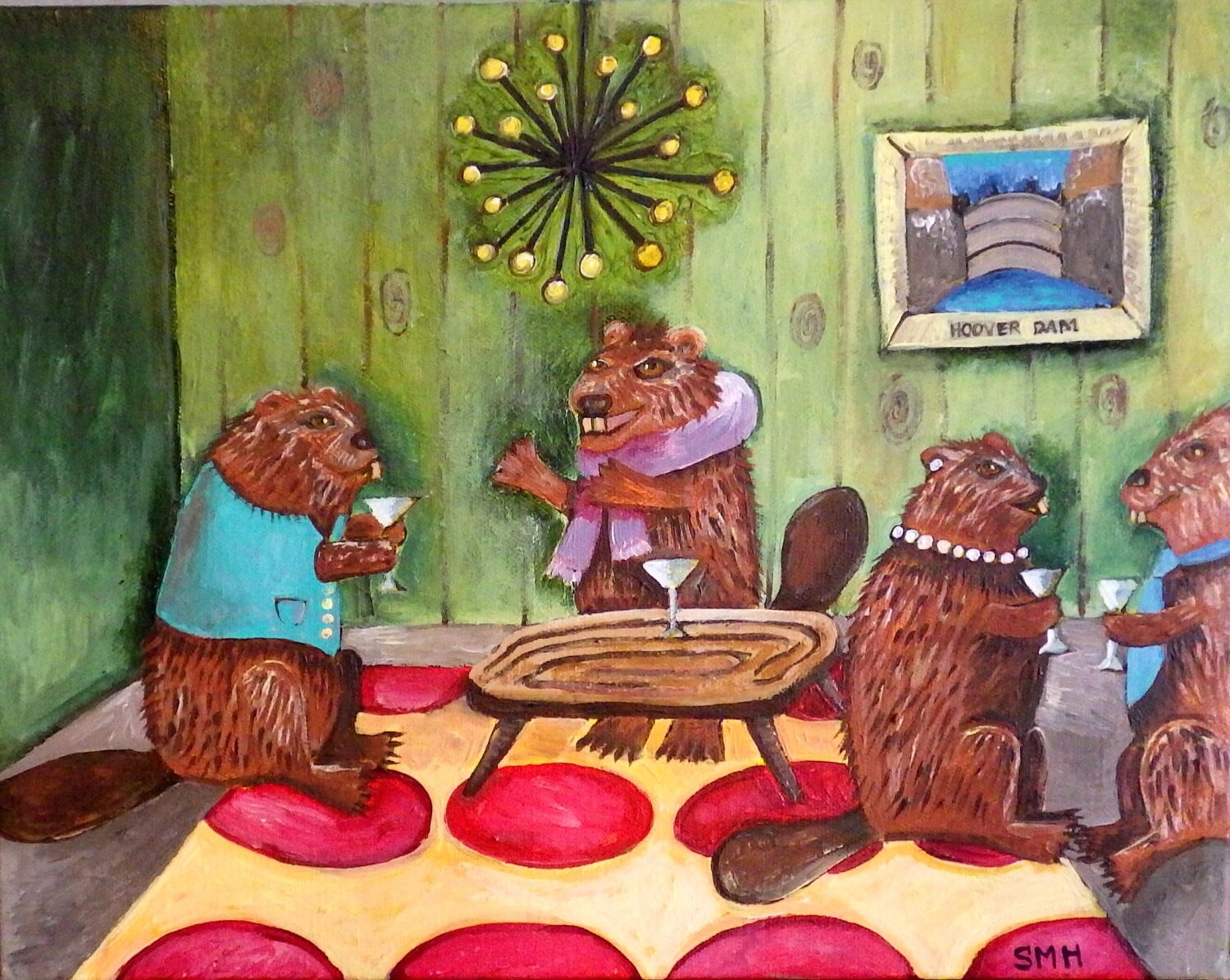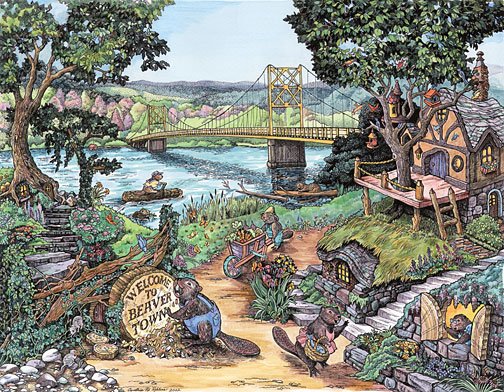Original title: Giving wolves credit for everything beavers do.
Tigra Scientifica: Man versus Predator
With predators’ numbers falling in the wild, the rest of the food chain is being forced to adapt.
Do you think lions and tigers and bears are scary? As it turns out, their absence is even scarier. Predator ecology is gaining in popularity, as scientists discover just how crucial top predators — such as lions, tigers and, well, you know the rest — are to the success of an ecosystem.
A prime example of an essential predator is the gray wolf, Canis Lupus. Once a thriving and abundant species, gray wolf populations have been nearly eliminated from 48 U.S. states. The absence of this apex predator has a dramatic top-down effect on the entire ecosystem. With their natural predators removed from the picture, elk populations flourish.
Do you give the pastor credit when the choir sings a truly ‘Amazing Grace’? Sure he plays a role, but he wasn’t singing those notes or practicing in the loft, was he? Now don’t get me wrong. I am a big fan of wolves. I love their song and their fur and their social interaction. I loved ‘never cry wolf’ more than any movie I saw in college, and to this day I remember scenes and vivid images from it. But wolves shouldn’t get all the credit for restoring creeks. Wolves don’t build dams or raise the water table or augment the invertebrate community so that we get more fish and more mammals and more birds that eat fish. Beavers do that, and it drives me crazy when they get only an ‘incidental mention’.
In turn, cottonwoods and other trees become elk chow. Fewer trees result in fewer songbirds and fewer resources available for beavers to build dams with. Remove beaver dams from an ecosystem and small ponds also disappear. Eliminating ponds reduces habitats for succulent plants, a critical food source for grizzly bears.
Someday Earth Guardians or Wildlife watch will make a film about how good beavers actually are for the creek and wildlife and it will blow the mind of every single well-meaning person who has sent me the wolf-glorifying film. Wolves make it possible for beavers to weave their magic, and that’s very important. But beavers are the one who do all the work and make the difference. Beavers are the ones who deserve the credit!
Hrmph.
- Wolf and Beaver – you can see the beaver’s tail slapping the surface (click to enlarge) Roads End Naturalist
Today’s donation is a whimsical painting by Suzanne Hunter of Phoenix Arizona called ‘Party in the Den’. Her Etsy shop ‘Red Raven Design‘ features “art with a sense of fun!” She painted the donation specifically for our festival, and her website says, “Yes, these hip beavers are having a cocktail party in the den! You never know what kind of crazy antics these revelers will get into. I did this painting specifically to benefit the beaver restoration project in Martinez, California. I’m all for animal and nature conservation and who doesn’t love the beautiful beavers!”
 I love to imagine the beavers in their lodge toasting our success! The painting is colorful fun but honestly my favorite part is what looks like Martini glasses the beavers are holding. How appropriate is that considering our beavers hail from the home town of the Martini? Thank you Suzanne for your wonderful support! How did you know?
I love to imagine the beavers in their lodge toasting our success! The painting is colorful fun but honestly my favorite part is what looks like Martini glasses the beavers are holding. How appropriate is that considering our beavers hail from the home town of the Martini? Thank you Suzanne for your wonderful support! How did you know?









![mud[1]](https://www.martinezbeavers.org/wordpress/wp-content/uploads/2011/12/mud1-1024x682.jpg)







 In some circles, beavers have long been considered pests that damage trees, clog up culverts, and build dams that inhibit or alter the natural flow of waterways. But, to two University of Wyoming researchers, the crafty critters are viewed as natural allies that actually can help keep riparian systems healthy in the short and long term.
In some circles, beavers have long been considered pests that damage trees, clog up culverts, and build dams that inhibit or alter the natural flow of waterways. But, to two University of Wyoming researchers, the crafty critters are viewed as natural allies that actually can help keep riparian systems healthy in the short and long term.






































